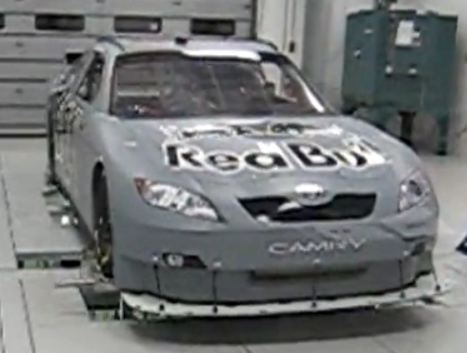Shaker Testing

Most professional race teams have, as part of their development effort,
a shaker testing program that will allow them to test suspension setup changes
in a shop environment before testing on track.
Lenduch LLC has extensive experience assisting at shaker testing, and developing software
to do both time domain and frequency domain analysis of shaker test results.
The shaker itself is an elaborate machine, with hydraulic rams under each wheel
that can dynamically simulate the bumps, potholes, and other road irregularities
that the car will encounter on the road or track. With a four-post shaker, there are also
three additional static actuators that can apply steady-state loads to the body, to simulate
steady-state aero, braking, and cornering loads. With a seven-post shaker, those three additional
actuators are hydraulic, and can simulate these body loads dynamically.
There are two major types of shaker testing that are commonly used on passenger and race cars.
The first, a more theoretical approach, applies a swept-sine input to the rams
under the tires that enables the determination of the natural frequencies of the car
and the modes by which it will oscillate when disturbed by road irregularities.
The second attempts to drive the vehicle with the same inputs it encountered on a given
track (by iterating the wheel pan displacement profiles until the suspension travel sensors
on the car exhibit the same signal trajectories on the shaker that they did on the track).
Click on the photo below to play a video of a race car being subjected to a track profile
that simulates one lap at a particular track, Daytona International Speedway.
